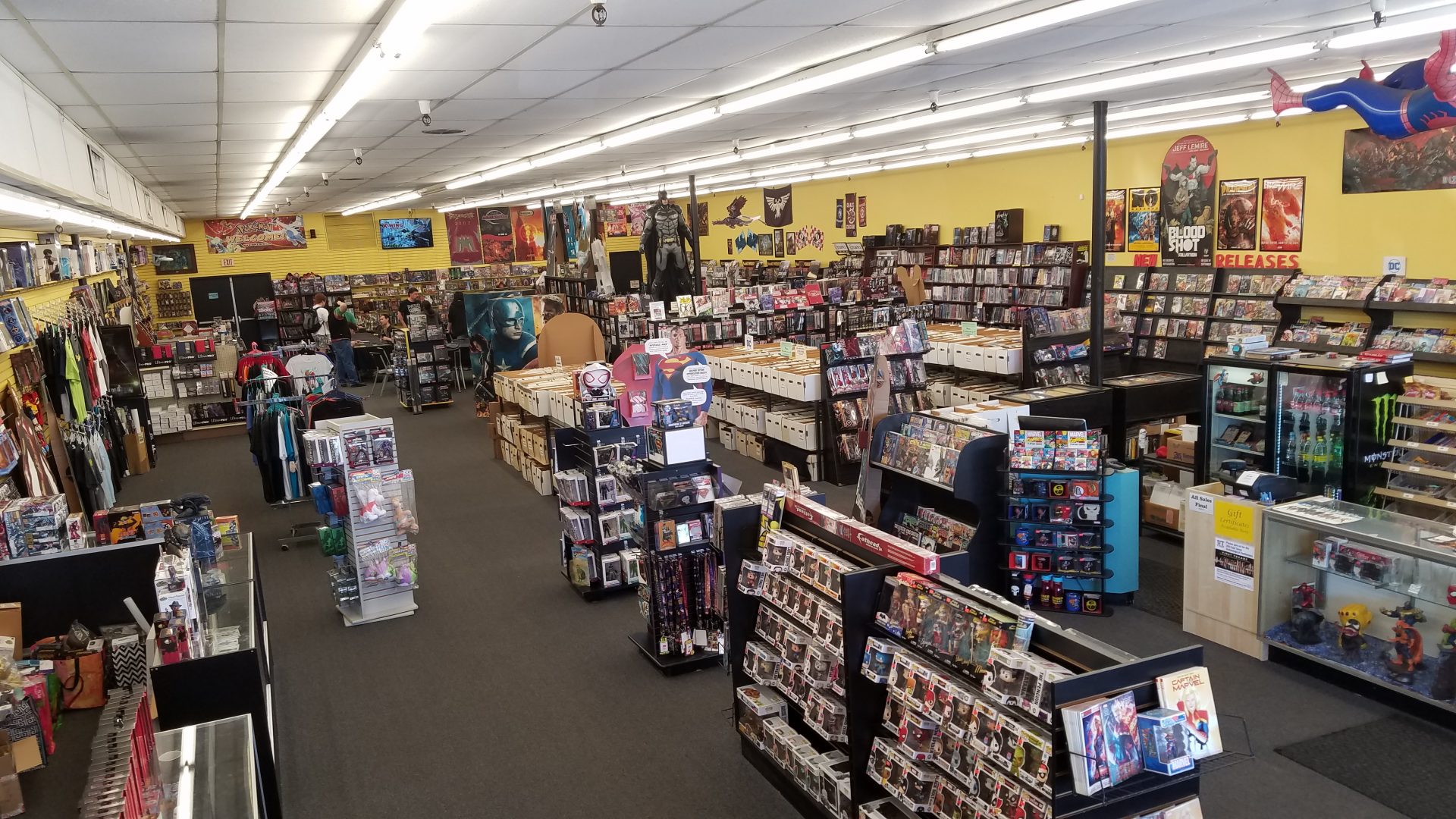 Investing in old comic books has been around for almost as long as comic fandom. As long as there are fans who want to find and aquire out of print comics, there will be people who are going to fill that need- for a price. It is simply capitalism at work. However, one of the key ingredients of capitalism in America is the fine art of going overboard. And like Wall Street on a “Buy and wait for the bail out” binge, comic fans love to go overboard.
Investing in old comic books has been around for almost as long as comic fandom. As long as there are fans who want to find and aquire out of print comics, there will be people who are going to fill that need- for a price. It is simply capitalism at work. However, one of the key ingredients of capitalism in America is the fine art of going overboard. And like Wall Street on a “Buy and wait for the bail out” binge, comic fans love to go overboard.
Comic speculation began in the early 70’s when a number of fans realized that they could buy extra copies of a book and sell it later for a profit. The first two books to be have been speculated on? Shazam #1 and The Shadow #1. Did it work? No. Supply and demand is the key motivator in the price that can be realized on any book. When speculators stockpile large quantities of a book, the supply usually exceeds any demand.
Comics speculation grew steadily until the early 90’s. Sports card investors descended on the hobby as the sports memorabilia market went bust. Superman’s death was made the news and suddenly people were lining up to buy massive quantities of comics, certain that each and every one of them would skyrocket in value, making them rich beyond their wildest dreams. Then, somewhere along the line, somebody realized that there actually had to be someone who wanted to buy their comic for it to be worth anything. Oops! Suddenly hoards of worried investors took their mountains of comics to shops, willing to let them go for only cover price! Unfortunately they might as well have had a stack of old TV Guides. No one wanted those books, or at least the few who did already had plenty of copies. The comic industry spent the remainder of the 90s rebuilding itself from the rubble left over when the speculation boom ended. Slowly, people realized that if they couldn’t sell their comics, they might as well read them.
For years, comic grading was more art than exact science. Although there were guidelines established in the Overstreet Price Guide (and companion volume Grading Guide), no one could completely agree on exactly how comics should be graded. This was not as crucial when you were buying a book from a dealer in person. You held the book in your hands and decided for yourself if the condition warranted the price that was asked. Unfortunately, buying books in person from a dealer became a thing of the past, when E-Bay and Amazon.com exploded in popularity. Suddenly, people were buying things over the internet with nothing but trust to assure them the item they are got was exactly as described. Then, in 2000, the Comics Guaranty Corporation (CGC) emerged. The idea was actually fairly simple. You sent the comic to them, they graded it using professional standards, sealed the book in a plastic container and gave it a numerical grade (0.5-10.0). A grade from an impartial third party assures that everyone was playing on the same field.
The grade was only considered valid as long as the book was still sealed in its plastic container, or “slabbed” as the terminology now went. If you took the book out for some reason (like…I don’t know, maybe to read it!), the grade became null and void and would have to be re-graded and re-slabbed again for the CGC to be valid. They can’t be faulted for this. If the package is opened, what’s to stop an dishonest dealer from substituting a lesser condition book in the package? Besides, why would you want to read your books anyway? They’re just part of your “comics portfolio”. Hold on, though. It got better.
Spider-Man #1K (that’s the silver version in a bag) had an astronomical print run when it was released almost two decades ago. There are more copies of the book floating around than there are comic fans, much less Spider-Man fans. Every comic shop in the country has so many in its’ boxes that you can usually find a copy for less than its current guide price of $15.00. Most of these copies are unread, as they were simply stored off the racks when they went unsold. Then one day someone put a copy for auction on e-bay that was CGC graded with a 10.0 (which pretty much means perfect) and the book sold for- are you sitting down?- $310.00! Then a Spawn #1 sold for $450.00 (guide- $14.00). I’m going to resist the urge to be melodramatic here and simply say:
DID WE LOSE OUR FREAK’N MINDS?
People are entitled to do what they want with their money, no matter how foolish. I’m afraid, however, that we simply cannot learn from our mistakes. Do we not see a problem here? Don’t get me wrong here. When the Spider-Man #1 sold, I thought, “Hey, I’ve got a case of those in my back room. I should get those slabbed and make my own fortune. But there can’t be that many stupid people out there.” Then Spawn #1 goes for $450.00. No one ever went broke overestimating the American public.
I guess that it is just too hard to resist the lure of easy money. I’m going to let you in on a secret that is guarded closely by comic dealers everywhere. Comic books have no inherent worth. None at all. If you don’t believe me, just go to a bank and try to use them as collateral. What we are dealing with here is perceived Value, nothing more. As long as people believe that something is worth a certain amount, then it is. It’s like those TV commercials that offer six ginsu knives for $12.99- a $49.99 value. Says who? If they are selling them for $12.99, what makes them worth $49.99? There will always be hucksters who will convince unsuspecting people that they are getting a bargain while they take them to the cleaners.
My problem is not with the CGC service. They are simply filling a market need, and making a healthy profit doing it. I’m just disturbed terribly that there is a market need for books that are sealed away where they can’t be read, so that they can be sold for several multiples of their commonly accepted price. Now that people are more likely to read those classic stories when they are collected in a trade paperback, or perhaps even as a digital download, future generations may be baffled at the idea of attaching any price, much less an inflated one, to an original artifact.
The irony here is that the comics themselves are nothing more than paper. The read value is the stories told on them and the pleasure and memories derived from them. I cannot fathom how you can put an exact price on things like that, but I’m sure someone somewhere is at this very moment figuring out a way to do just that. And as soon as they do, somebody else will concoct a way to assign a grade to it so that you can pay a premium price for it.
Suckers beware.


